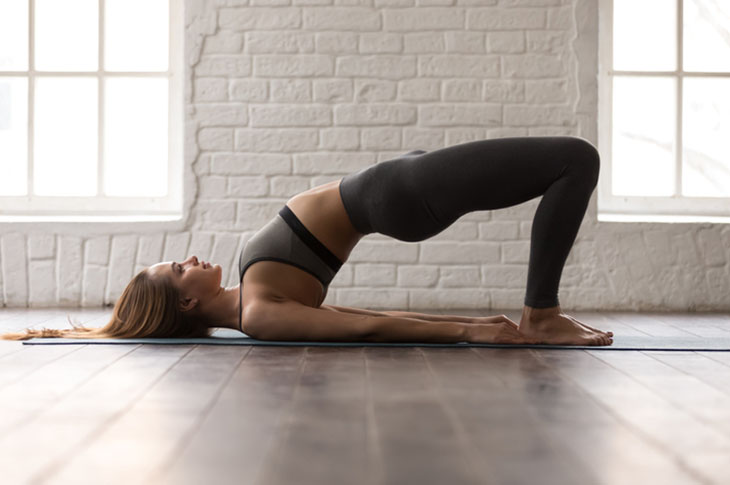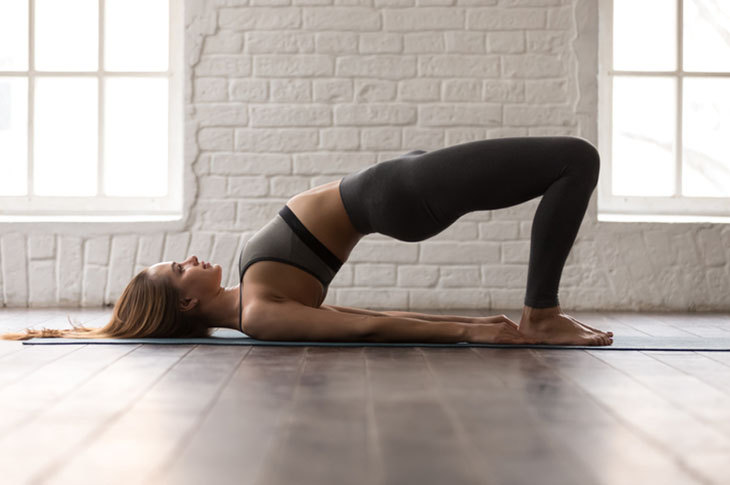
You probably don’t give your hips much thought. Until they start to hurt. Then it’s hard to think of anything else. That’s because hips are among the largest joints in your body, flexing, extending, and rotating to help you stand, sit, squat, twist, and turn. So, they get a lot of wear and tear.
When your hips begin to hurt, it’s easy to assume you overdid it at the gym. But most tight hips aren’t caused by injuries. “For most people, tight hip muscles are usually the result of spending many hours per day in a specific position or using the same poor body mechanics throughout the day,” says Christopher Gagliardi, MS, CPT, scientific education content manager for the American Council on Exercise.
The main offender is sitting. Here’s why. When you’re seated, your hip flexors (aka the muscles that cross the hip joint on the front of your thigh) shorten. At the same time, your hip extensors on the back of your thigh lengthen, causing an imbalance. That may not sound so bad, but if you spend 8 hours a day at your desk, another hour or two in the car, and a couple of hours on the couch reading or watching TV, your hips can easily be scrunched up for 12 hours a day. And if you sleep curled up on your side, that number can climb to 20 hours (yikes!).
The good news is you can take steps to undo the damage. The first is to divide all that sitting with frequent activity breaks. For example, get up to fold a load of laundry, check the mail, or empty the dishwasher. You can also stand while you text or walk around the room when you’re on the phone. Another strategy is switching up your sleeping position. For instance, if you usually snooze on your side, try sleeping on your back or your stomach (at least to start with). Sure, you may flip onto your side, but overall you’ll decrease the amount of time your hips are flexed. [Tips provided by Gagliardi]
Finally, there’s exercise. This regimen, designed by Gagliardi, is a great way to stretch and strengthen the hip muscles for greater mobility and support. Before starting, be sure to warm up with 5 to 10 minutes of light-to-moderate aerobic activity, like walking or light biking.
Move 1: Kneeling Hip-flexor Stretch.
2-4 repetitions for a total of 60 seconds for each leg
Begin in a kneeling position with your knees directly under your hips. Slide your right foot forward so that your right knee is directly over your right ankle at a 90-degree angle. Next, place both hands on your right thigh to help maintain a straight, tall spine. Pull your shoulders down and back without arching your low back. Engage your abdominal muscles to stiffen the spine and keep your pelvis stable. Lean forward into your right hip while keeping your left knee pressed into the ground (don’t allow your pelvis to rotate forward).
To increase the stretch, squeeze and contract your left glute muscles. Stretch to the point of slight discomfort, but not pain, for 10-30 seconds. Repeat on the other side.
Move 2: Cobra.
2-4 repetitions for a total of 60 seconds
Lie face-down on your stomach with your palms on the floor and hands facing forward, directly under your shoulders. Then, extend your legs and flex your ankles with your toes pointing away from your body. Gently exhale and press your hips into the floor while pulling your chest up off the ground. You should feel an arch in your low back and a stretch in your chest and abdominal muscles. Hold for 10 to 30 seconds. Gently relax your upper body and lower it to the floor.
Move 3: Glute Bridge.
2-4 sets of 8-12 repetitions
Lie on your back with your knees bent and your feet flat on the floor, hip-distance apart. Gently contract your abdominal muscles to flatten your lower back into the floor. Exhale, contract your glutes, and lift your hips upwards off the ground without arching your back. Press your heels into the floor for additional stability. Slowly inhale and lower your upper body to the floor to return to the starting position.
Move 4: Single-leg Romanian Deadlift.
2 – 4 sets of 8 to 12 repetitions
Start in a standing position with your feet hip-width apart. Keep your back tall and straight and your knees slightly bent. Slowly lean your upper body forward and allow your arms to hang straight downward. Simultaneously lift your left leg backward off the ground so that it is straight and parallel to the floor. Lean forward to a comfortable distance, keeping your back straight. Slowly return to standing by squeezing your right glute while swinging the left leg down towards the floor. Repeat on the opposite side.
The post 4 Moves to Combat Chronically Tight Hips appeared first on Fitbit Blog.

